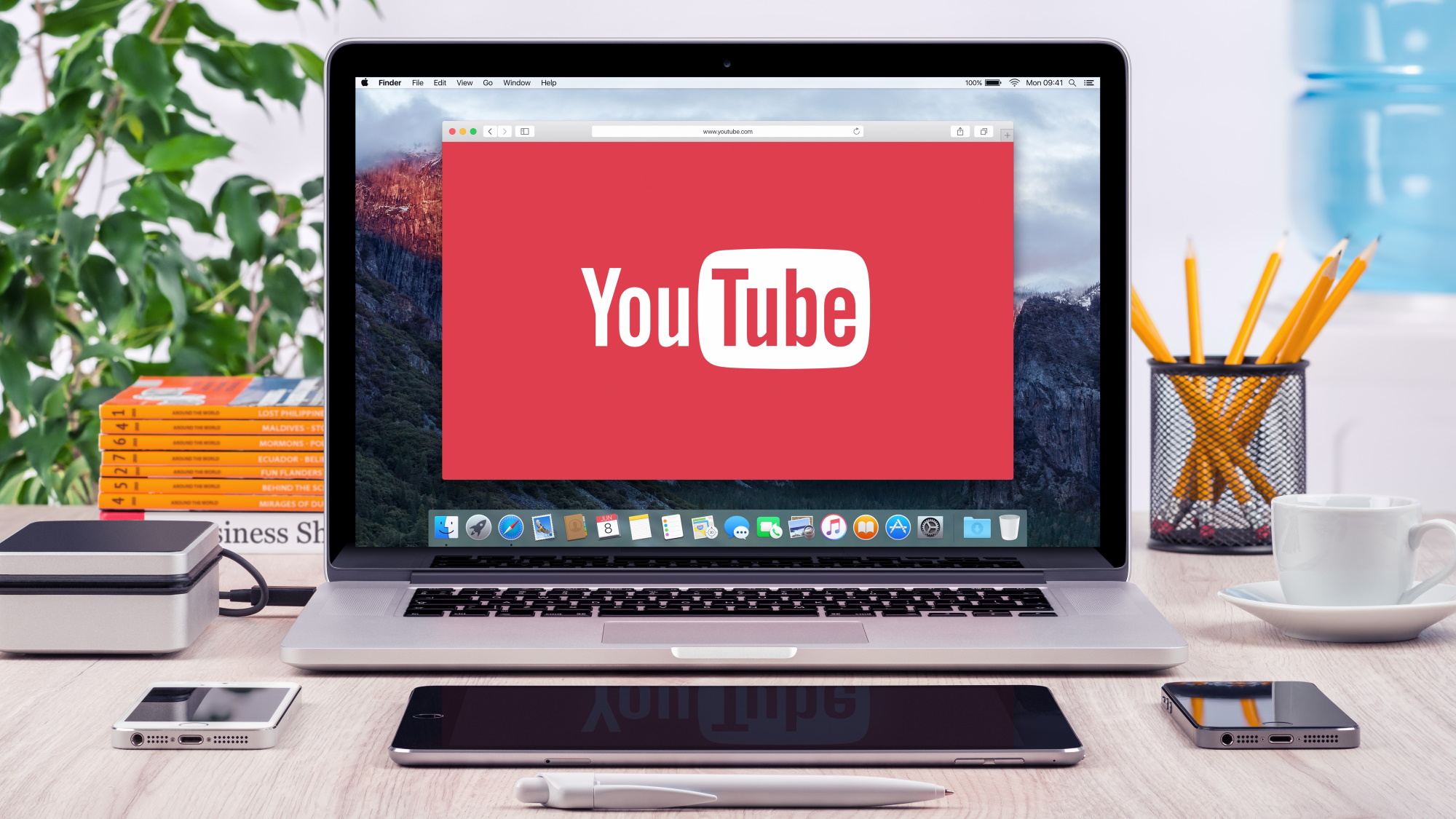How to unblock YouTube and watch videos from anywhere
Get your video fix and side-step any YouTube bans with a VPN

It's no revelation that YouTube gets a lot of traffic. In fact, it’s the second most popular website in the world, second only to – you guessed it – Google.
There’s a staggering amount of YouTube content watched on a daily basis, but not everyone can partake in the video watching fun.
You may find when you go to watch YouTube that you're blocked from doing so – maybe even on a permanent basis. This might be the case in an office, college or school, or when visiting a foreign country with a ruling regime that censors the internet (e.g. China, Iran, and Syria).
So how do you unblock YouTube?
Luckily, there’s an easy solution. Hook yourself up with one of the best VPN services and you'll be able to stealthily sneak around any restrictions, and get back to enjoying your fix of music videos or cute pets in no time. Or, simply use one of the best free YouTube downloader apps before you leave home.
- Related: How to unblock WhatsApp
Unblock YouTube with ExpressVPN
ExpressVPN - the top VPN to unblock YouTube
Sitting at the top of many of our buying guides, ExpressVPN is the best in class when it comes to unblocking YouTube, as well as other streaming platforms such as Netflix and iPlayer. An intuitive, smart interface, it also host to a bunch of great security features, making this our choice for a VPN to unblock YouTube.
Why do I need to unblock YouTube?
There are a number of reasons why somebody may have spoiled all the fun and put a block on YouTube, and therefore why you'll need the best YouTube VPN. Two places where it's prevalent are in offices and schools, where bosses and principals are fed up of employees and students wasting time watching YouTube videos. They can then enact a blanket blockage at an IP address level so that YouTube just doesn't show.
Perhaps more malevolently, YouTube is no stranger from being completely censored in certain countries around the world, too. This can be done in part - where only certain content is prevented from being viewed - or entirely, which is what the likes of China, North Korea, Iran and Turkmenistan have done (hence why VPNs for China have become so popular).
In some cases, live streaming videos on YouTube are blocked due to rights reasons. For example, one country may be showing a certain event for free on YouTube, but in another country a particular broadcaster has paid for the rights. In cases like that, YouTube will be stopped from broadcasting the live stream in the country where the broadcaster had bought the rights.
Why would I want to unblock YouTube?
As we’ve just touched on, there are a few possible scenarios in which YouTube could be blocked. The main suspects are employers banning the video service, or governments cracking down on YouTube and blocking it completely – plus some content might be restricted on a regional basis due to rights issues.
Offices and universities
It’s not uncommon for companies or universities, colleges, or schools, to implement a ban on YouTube for an obvious reason – the addictive nature of browsing the unfathomably large library of videos means the service is quite the time-sink. So preventing access to the potential distractions of YouTube is seen as a must in terms of keeping people focused on their work or studies.
Going abroad
When you travel, you might find yourself in a country where YouTube is completely banned. Such countries include China, where not only YouTube but all Google services are banned (this is one reason why VPNs for China have become so popular), and other usual suspects like North Korea. Iran has also blocked YouTube, and the video service has been banned (or at least partially blocked for certain content) temporarily in a whole host of countries in the past, including Germany and Pakistan.
Copyright problems
Sometimes a livestream video is being shown on YouTube in one country, but not others. This is usually because another broadcaster in other regions has bought the rights to the stream, in which case in that nation the YouTube video will be blocked.
Whichever of these types of scenarios you run into, they all have the same simple solution – get yourself a YouTube VPN. This be used to change your apparent location, and therefore get around any geo-restrictions and local blocks.
How to unblock YouTube - step-by-step guide
- Select a VPN Already got one? Then you're good to go... most reputable VPNs can unblock YouTube with ease. Otherwise, take a look at our guide to the best VPNs.
- Install the VPN app – Install the software, either on your PC, smartphone or tablet; whichever devices you’re planning on accessing YouTube with. Any good provider will have mobile VPN apps for iOS and Android.
- Start the VPN app – Once opened, you’ll have to run through the app’s setup, and agree to certain permissions – either terms and perhaps privacy conditions, or permissions to access your device.
- Hit ‘connect’ – The main menu will have some kind of ‘connect’ button and pressing this will fire up the VPN connection using the provider’s nearest server (or fastest server, often one and the same thing). For getting around an office-wide (or college-wide) ban, that’s all you need to do; it’ll seem like you’re located outside of the building. Circumventing a country-wide ban necessitates another step…
- Select another server – To evade a total block across an entire nation, you’ll need to switch to a different server in another country. The app should have a long list of servers – or maybe a world map showing them – just choose one in a different (but nearby) country, which you’ll then appear to be located in, allowing you to freely stream YouTube.
- Enjoy YouTube – Start watching videos and scratching your head at the bizarreness of the comments section!
It's worth noting you'll only be able to install a VPN if you have administrator rights on your device. This process may therefore not work if your computer is supplied by an employer or school.

Unblock YouTube: what VPN should I use?
ExpressVPN is our first choice as the provider which is most suitable for those looking to side-step YouTube restrictions. And not least because this service has been top of our list of the best streaming VPNs for a good long time now, an achievement that reflects the quality on offer here.
This VPN boasts a whole raft of features, and a large number of servers worldwide (in 90+ countries) to make it easier to find a fast one nearby.
It has excellent unblocking powers – not just for YouTube, but other services like Netflix – and you get a wide choice of VPN protocols, including ExpressVPN’s own Lightway protocol, which proved itself to be impressively speedy in our testing (even with distant servers).
And of course, when it comes to streaming video content – particularly at higher resolutions – having plenty of performance on tap is a major benefit. Support for a wide variety of different devices that you might watch videos on is also key, and ExpressVPN offers that in spades.
Our second pick for a VPN to use with YouTube is Surfshark, which also offers great speeds for a slick streaming performance, and represents superb overall value for money - it's right up there among our picks of the today's top cheap VPNs. A ‘camouflage mode’ also hides that you’re using a VPN to stop your ISP potentially throttling any streaming activity (if the ISP engages in that practice).
For more high-quality options for a VPN to unblock Google’s video service, head on over to our best YouTube VPN guide.
Is it illegal to unblock YouTube with a VPN?
While it’s not unlawful to get into YouTube by using a VPN when you can’t access it otherwise, and Google doesn’t specifically forbid using a VPN to watch YouTube, the terms of usage do state that you cannot: “circumvent, disable, fraudulently engage, or otherwise interfere with the Service … including security-related features or features that: (a) prevent or restrict the copying or other use of Content; or (b) limit the use of the Service or Content.”
So, as you might expect, circumventing content which isn’t available due to rights issues wherever you are is not permissible. Of course, it’s not the action of unblocking using a VPN, but the nature of the content you’re unblocking which is problematic. There’s nothing illegal about watching normal YouTube videos with a VPN to get around restrictions put in place by an employer or a ruling regime.

That said, in the latter case, while from the perspective of YouTube (or Google), it might be fine to use a VPN to evade a country-wide blanket ban put in place by a government, the authorities may have outlawed VPN usage itself – and that could get you into serious trouble, potentially.
So be sure to check the laws on VPN use in any country you’re travelling to, and if you go against those regulations, you obviously do so at your own risk.
Read more:
- Get the best YouTube downloader to save your YouTube playlists on your PC
- VPN uses: discover brilliant ways to get the most from your software
- See how a Netflix VPN can get you access to way more shows and films
Sign up for breaking news, reviews, opinion, top tech deals, and more.
Darren is a freelancer writing news and features for TechRadar (and occasionally T3) across a broad range of computing topics including CPUs, GPUs, various other hardware, VPNs, antivirus and more. He has written about tech for the best part of three decades, and writes books in his spare time (his debut novel - 'I Know What You Did Last Supper' - was published by Hachette UK in 2013).
